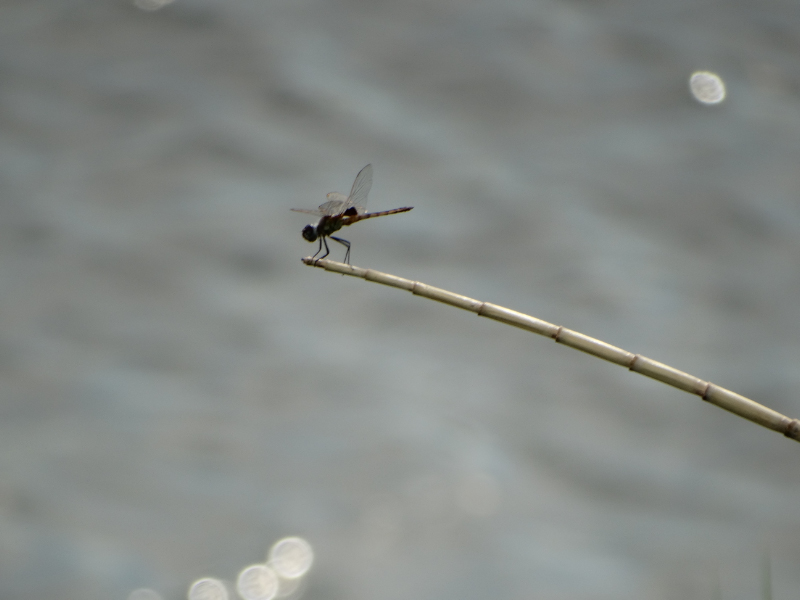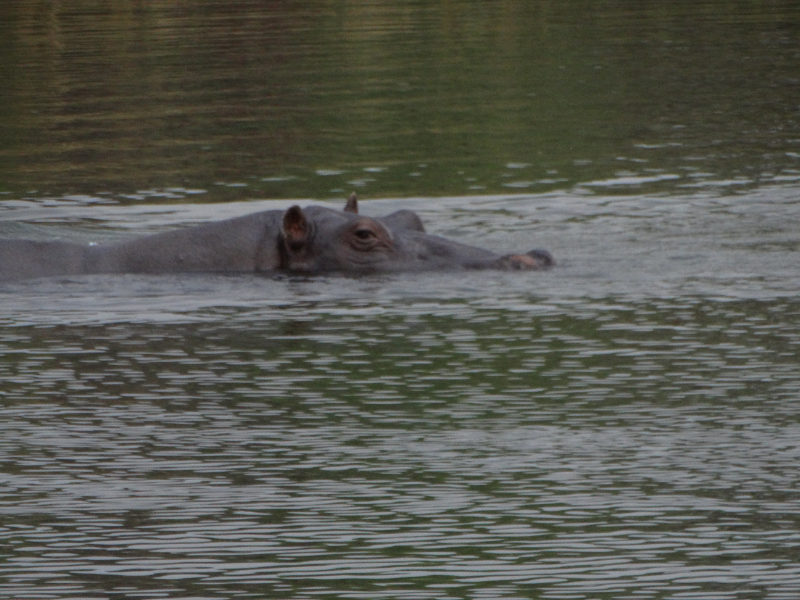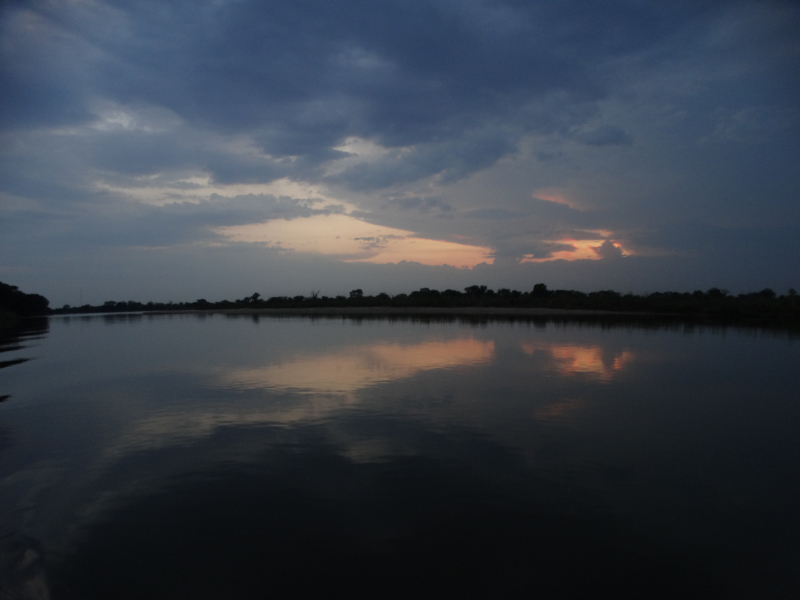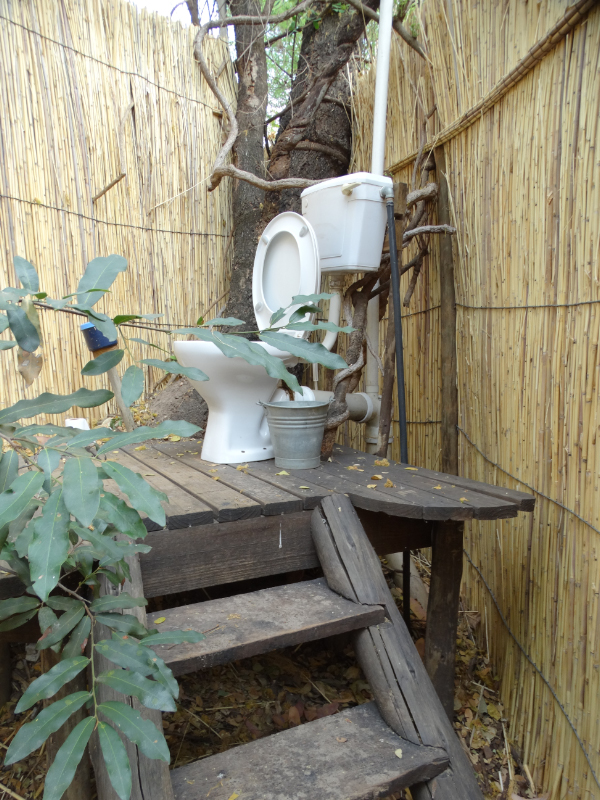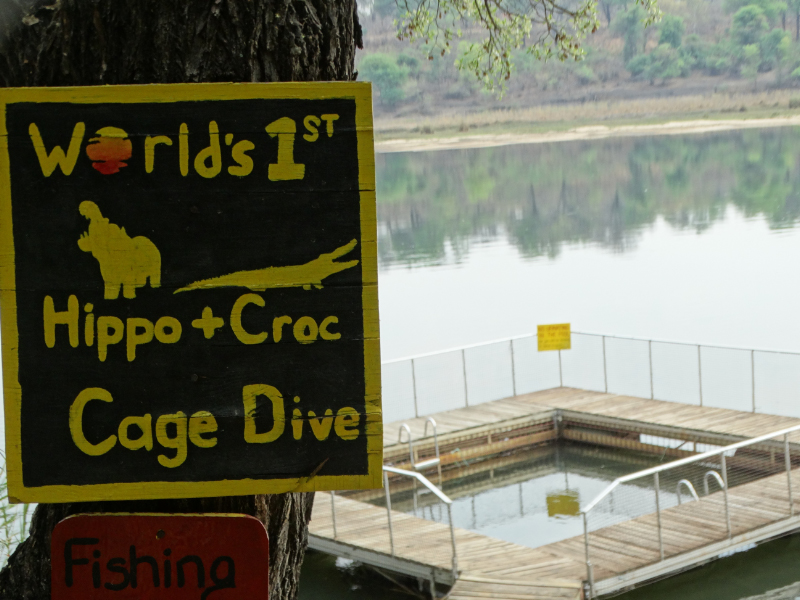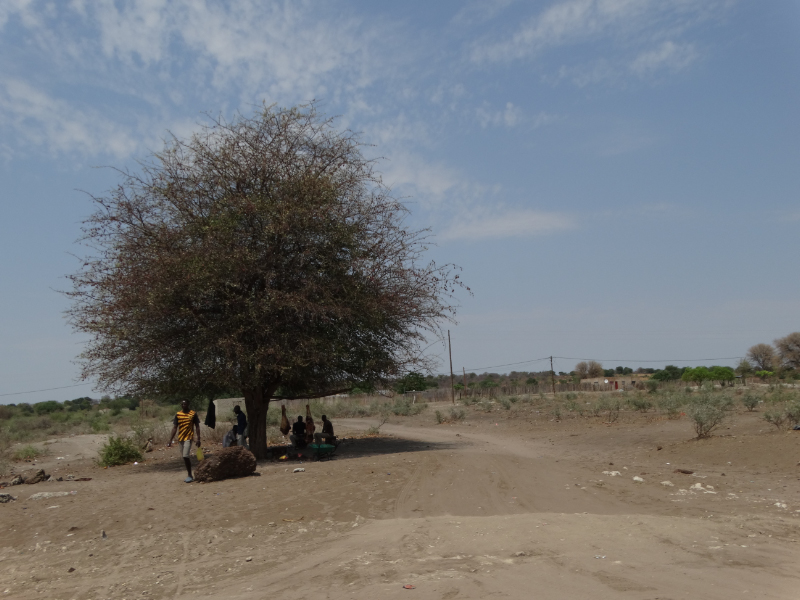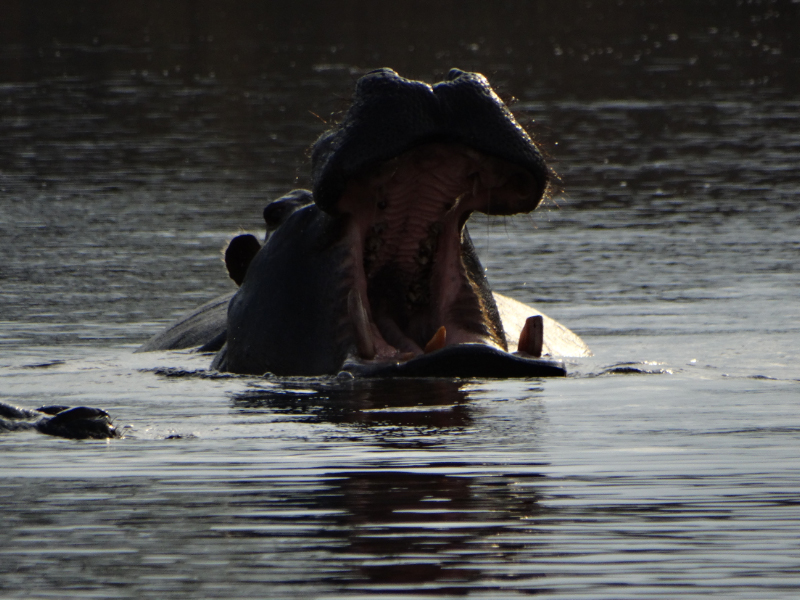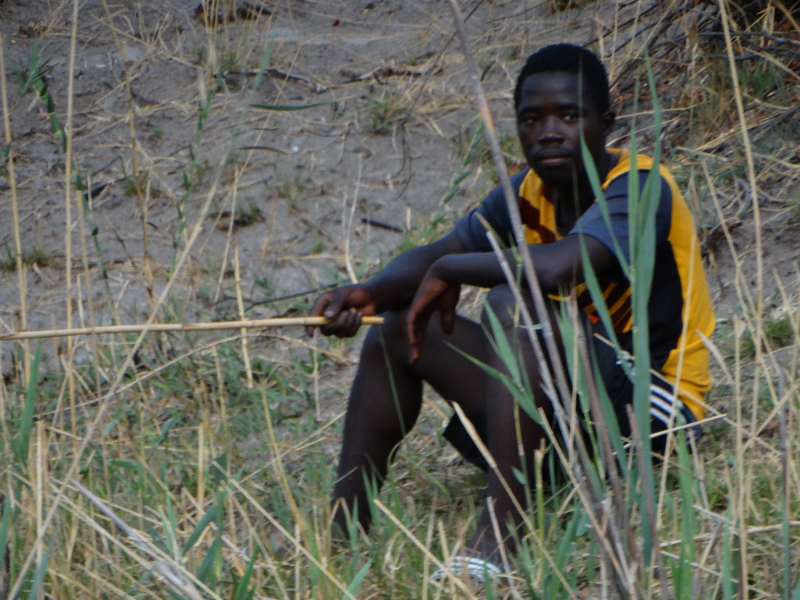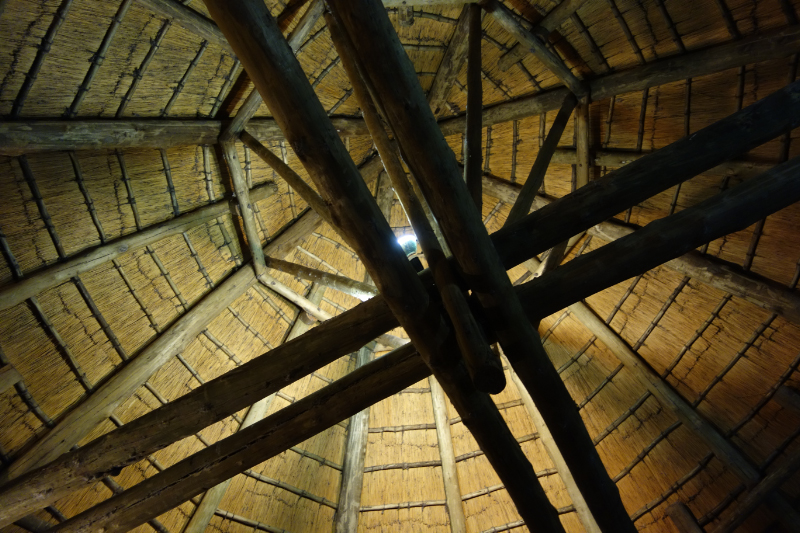Wednesday 2 to Saturday 6 November
We’d almost become afraid of tarred roads. After driving 3,000 km on gravel roads we’d become used to the driving skills and looking out for stray animals. The tarred roads in Namibia are straight and boring. But the route to the Caprivi Strip, the panhandle in north east Namibia is such a popular route that it is tarred.
Four hundred kilometres went quickly but without interest. On the Caprivi Strip we detoured to the Kvango River.
Roofing straw was stacked ready for sale along the road. Most reception centres and some of our rooms have been roofed in this straw which has a life expectancy of between ten and twenty years if it is not raided by hornet caterpillars or tree squirrels. I was told that the grasses came from invasive plants in the north of Namibia. I guess that is here.
After stocking up on fuel yet again, we followed instructions to our next accommodation just south of Divundu. Actually our TomTom didn’t even know about Divundu so we had to resort to MapsME on the travel phone.
We turned into a dirt road. This was not the gravel we were used to. Instructions said this road was 4km long. Suddenly we had a choice. 4WD go right, 2WD go left. We were following a small car which was struggling on the sandy path, so we took the 4WD option. Suddenly Bruce was slipping and sliding in the sand. This was not an easy entry.
We survived the 4km to a friendly greeting and directions to our tree house. This turned out to be a hut with a straw roof, bamboo blinds as walls and a verandah that dropped straight into the Kavango River. What about that midnight loo stop??
Here we found water – a river flowing, rather than the sandy river beds we had become used to.
One thing we have learnt about Namibia is that each accommodation has its own rules and timetable for serving meals. A smorgasbord might be Kudu or Kudu. A la carte may offer Kudu or Kudu.
In this case a buffet was offered. Two lovely African ladies stood behind a counter and served the choice of the night. I was able to ask for a small serve, but there were no options, it was Kudu.
There was not a lot to do at Ngepi Camp, but we enjoyed exploring this eclectic space with lots of funny little signs reminding you to look after this earth.
The one that amused me most was the toilet sign – my need to go was shattered when I entered through the Women’s entrance, to be confronted by two toilets – His and Her.
There were camp sites along the river as well, each with toilet and shower facilities and a heap of cute signs.
We took a short boat ride along the river – it was a bird watching event.
After our two night’s adventure in the wilds, we drove further east along the Caprivi Strip to our next accommodation. This area is reserved for native lifestyle. We passed a number of small villages along the way. Roofing straw and wood were stacked neatly by the road. We took a detour from the main road, but felt we were intruding on the small communities that made their life there, so quickly turned back onto the main road.
Our next accommodation at Camp Kwando along the Kwando River was rather more luxurious. I especially like the rail on the balcony that kept me from falling off and into hippo infested waters, if I were to sleep walk.
We admired the native style buildings, but found that the straw roof that had interested us so much, made us very uncomfortable. There was no chimney or air vent and no escape for the warm air.
This was bird paradise, with plenty of flowering trees to keep our feathered friends happy.
We watched an old buffalo grazing on the other side of the river, in Botswana.
We took a sundowners water safari along the Kwando River which runs along the border of Namibia and Botswana. There was a great variety of birds. Our guide Hidden took time out to show us how the native people use the papyrus reeds to make rope, mats and baskets. It is an ancient craft, still used in these parts.
We continued the safari downstream until we came across a bloat of hippos. They are agile and can be dangerous in the water, so that marked the turn around point of our safari.
The sun was fading as we returned, and a couple of fishermen were testing their luck on the side of the river.
As we left Camp Kwando next morning, we stopped by a massive Baobub tree which displayed beautiful flowers. The Baobub is a close relative of our Boab tree.
We were heading into the unknown now – across the border to Botswana and then on to Zimbabwe for the last few days on this fantastic journey.
e_header.jpg)





